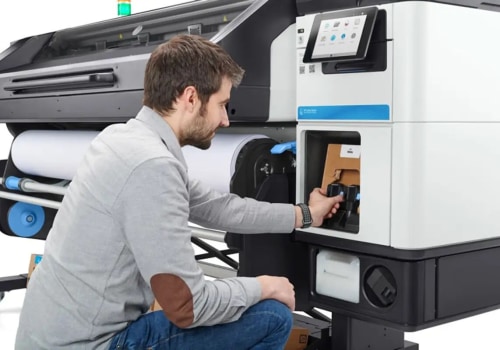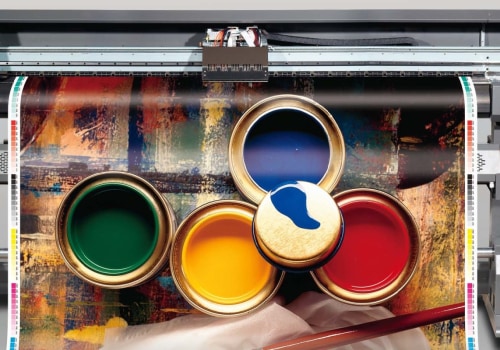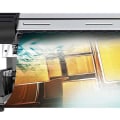Advertising and marketing materials are essential tools for any business looking to stand out from the competition and reach new customers. With the right materials, businesses can create powerful visuals that attract attention and communicate their message. From large format prints to brochures and flyers, there are many ways to create effective advertising and marketing materials. In this comprehensive overview, we'll explore the different types of materials available, their uses, and how to create the best materials for your business.
Advertising and Marketing Materials
are essential tools for businesses to reach their target markets.They can come in a variety of forms, from physical materials like large format prints to digital media like web banners and email campaigns. When used correctly, advertising and marketing materials can be incredibly powerful tools in helping businesses reach their goals. In this article, we'll look at the different types of advertising and marketing materials, their common applications, advantages and disadvantages, and tips for creating effective materials.
Digital Materials
are becoming increasingly popular for advertising and marketing. Digital materials can include web banners, online ads, emails, social media posts, and more.These materials are generally easier to create and can be seen by a broader audience with a wider reach. However, digital materials require more effort to track the success of campaigns, as well as to optimize them for maximum impact.
Physical Materials
are often used in addition to digital materials, or as a standalone option. Physical materials such as signs, banners, flyers, posters, brochures, and more are great for targeting local audiences or customers who prefer traditional advertising methods. Physical materials are also easier to track and measure the success of campaigns.Advantages of Advertising and Marketing Materials
include increased brand awareness and recognition, higher conversion rates, better customer relationships, targeted messaging for specific audiences, and improved customer loyalty.They can also be used to gain insights into customer behaviour and preferences.
Disadvantages of Advertising and Marketing Materials
include the potential for low return on investment (ROI), lack of control over how the material is used or perceived by customers, lack of flexibility in terms of changing messages or targeting different audiences, the cost of production and distribution, and the potential for negative feedback or misinterpretation of the message.Tips for Creating Effective Materials
include using attractive visuals, including a clear call-to-action (CTA), using targeted messaging that speaks to the intended audience, testing different versions of the material to determine what works best, and being aware of cultural sensitivities or other potential misinterpretations.Best Practices for Using Materials in Campaigns
include having a clear objective in mind before beginning any campaign, creating a plan for implementation and measuring success of the campaign using analytics or other methods, using multiple channels to reach a broader audience, tracking results over time to make improvements if necessary, and budgeting appropriately for production and distribution costs.Examples of Successful Campaigns
using various materials can provide inspiration for businesses looking to create an effective campaign. Examples can include campaigns that have utilized physical materials such as posters or flyers, digital materials such as web banners or emails, or campaigns that have combined both physical and digital methods. It's important to note what elements made the campaign successful so that businesses can replicate these elements in their own campaigns.Measuring Success
of advertising and marketing materials requires careful tracking and analysis. This includes tracking clicks or impressions on digital materials, tracking sales or inquiries from physical materials, monitoring customer feedback from social media or other channels, and analyzing overall ROI from the campaign.By understanding which elements are working and which are not working, businesses can make improvements to their campaigns over time.
Optimizing Materials for Maximum Impact
is essential for making sure that campaigns are successful. This includes ensuring that materials are up-to-date with current trends in design or messaging, testing different versions of the material to find out what works best with customers, paying attention to detail when it comes to formatting or visuals, and adapting materials based on customer feedback or analytics data.Resources
for further reading or research on advertising and marketing materials can provide additional insight into best practices or creative ideas. Resources can include blogs or articles written by experts in the field, case studies from successful campaigns, industry reports on trends in marketing materials, toolkits on creating effective campaigns, books or ebooks related to advertising and marketing materials, and videos or podcasts that provide valuable information.Resources for Further Reading and Research
Advertising and Marketing Materials: Resources for Further Reading and ResearchWhen researching and planning your advertising and marketing materials, there are many resources available to help you learn more. Here are some helpful resources to consider:- Books and publications on advertising and marketing materials
- Websites dedicated to large format printing and graphics
- Industry magazines on advertising and marketing materials
- Conferences and trade shows for large format printing
- Online forums about advertising and marketing materials
Additionally, many of these resources offer networking opportunities with other professionals in the industry.
Tips for Creating Effective Materials
Creating effective advertising and marketing materials is essential for businesses to reach their target markets. To make sure your materials are successful, it is important to consider the type of material you choose, how it will be used in campaigns, and other best practices. When choosing which type of material to use, consider the audience you are trying to reach. For example, if you are targeting a younger demographic, digital media like web banners and email campaigns may be more effective.However, for an older audience, physical materials like large format prints may be more effective. It is also important to consider how your materials will be used in campaigns. For example, if you are creating an email campaign, make sure you have an effective subject line and that the design of the email is eye-catching and easy to read. When creating web banners, consider the size and placement of the banner to ensure that it is visible and easily clickable.
Other best practices for creating effective advertising and marketing materials include:
- Creating clear, concise messaging that conveys your message quickly and effectively
- Including relevant visuals or graphics that help draw attention to your materials
- Making sure the design is consistent with your brand's aesthetic
- Testing different materials to see what resonates with your target audience
Types of Advertising and Marketing Materials
Advertising and marketing materials come in a variety of forms, ranging from physical materials such as large format prints to digital media such as web banners and email campaigns.Each type of advertising and marketing material has its own advantages and disadvantages, making it important to choose the right material for your business’s needs. Physical materials, such as large format prints, are popular for outdoor advertising because they can be seen from a distance and require minimal effort to set up. However, they can be costly to produce and require frequent replacement due to weathering or vandalism. Digital materials, such as web banners and email campaigns, are cost-effective, easy to create, and can be quickly updated as needed. However, they don’t have the same visibility as physical materials and may require additional investment in software or services to effectively manage. Successful campaigns often include a mix of both physical and digital materials.
For example, a business may use large format prints to advertise an upcoming event while using email campaigns to keep customers informed on the latest promotions. By combining physical and digital materials, businesses can maximize their reach while controlling costs.
Measuring the Success of Materials
When it comes to measuring the success of advertising and marketing materials, there are a few key metrics that businesses should consider. These metrics include impressions, reach, engagement, and conversion rates. It is important to remember that success is not just measured by number of sales, but also by how well the materials resonate with the target audience.Impressions refer to how many times a material has been seen. Reach refers to how many people have been exposed to the material. Engagement measures how often users interacted with the material, such as clicking on a link or sharing it with their social media followers. Finally, conversion rate measures how effective the material was in motivating viewers to take action, such as making a purchase.
Optimizing Materials for Maximum ImpactIn order to maximize the success of advertising and marketing materials, businesses need to ensure that their materials are optimized for their target audience. This includes using visuals that are attractive and engaging, as well as crafting compelling copy that speaks directly to the needs and interests of the target audience. Additionally, businesses should make sure that their materials are optimized for different platforms, such as web banners for desktop and mobile devices. Finally, businesses should test different versions of their materials in order to determine which versions are most effective in driving engagement and conversions. Advertising and marketing materials are an essential part of any business's marketing strategy.
By understanding the different types of materials available, their common applications, and best practices for creating effective materials, businesses can increase the reach and effectiveness of their campaigns. With the right resources and careful measurement, businesses can ensure that their advertising and marketing materials are working to their greatest potential.











Leave Message